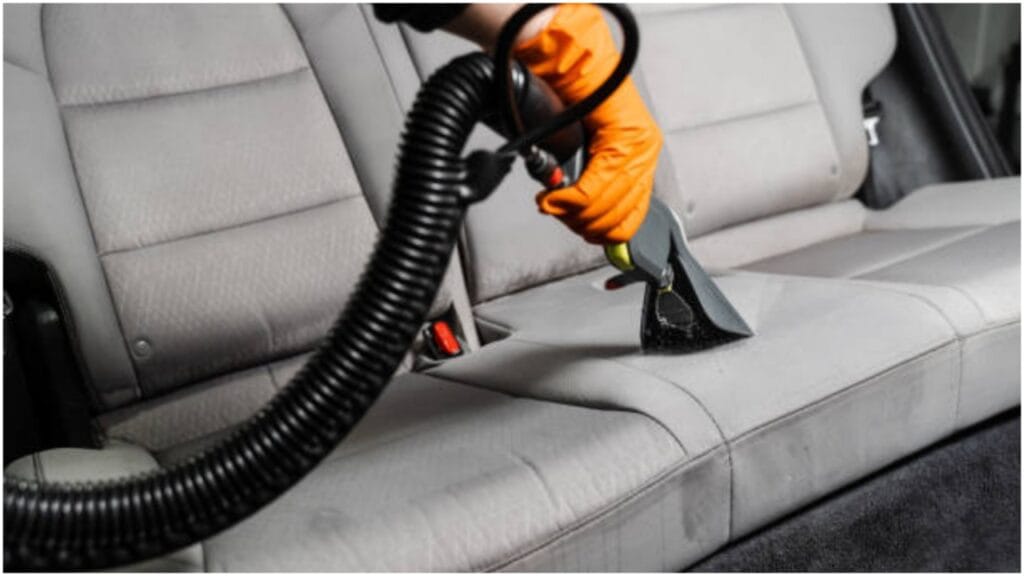If you have a sock stuck in your vacuum hose, don’t panic. To avoid accidents, start by turning off the vacuum and unplugging it. Next, inspect both ends of the hose to see if the sock is visible. If you can spot it, try pulling it out gently. Use a pair of long tweezers or pliers to grab the sock and pull it free.
If the sock is more profound in the hose, you may need to disassemble it. Carefully remove any clamps or connectors holding it in place. Once you’ve removed the hose, try pushing the sock out from one end using a long object like a broomstick or a similar item. Be gentle to avoid damaging the hose.
If the sock doesn’t budge, you can use a wet/dry vacuum to create suction from the opposite end and pull it out. Afterward, check the hose for any blockages or debris causing further issues. Always ensure the hose is obvious before reattaching it to the vacuum. Read the steps below to get more information and a better idea.
Examine the Situation
Before diving in, take a look at your vacuum hose. If it’s visible, you might have an easier time than you think. If it’s deeper in there, you’ll need to get creative. Either way, the first step is figuring out how stuck that sock is.
Remove the Hose
If the sock is near one end of the hose, gently try to pull it out. Depending on the material of the hose, you can do this with your hands, or you might need a pair of long tweezers or pliers to get a better grip. Just be careful not to tear anything while you’re you’re pulling.
The next step is to remove the hose from your vacuum entirely. Usually, this is as simple as unscrewing a few parts or unclipping a connector. Once you have it off, you can work with it more quickly.
Pushing from the Other End

A sock is just too stubborn to pull out from one side. If that’s the case, the next trick is to push it out from the other side.
You’ll need something long and relatively smooth, like a broomstick or sturdy wooden dowel. Don’t try to force it, but gently tap or push from the opposite end.
This can take a few tries, and yes, it can be tedious. Keep tapping and pushing until you see it come through the other side.
Using Suction to Help
If you struggle to get that sock out, another method might work. Try using a wet/dry vacuum. Set the vacuum to suction mode and attach the hose to the other end of the vacuum.
Once you’ve sealed it properly, you can use the suction power to draw the sock out. It might take a few tries, but this method often works when the sock is lodged there and doesn’t want to budge.
Disassemble the Hose (If Necessary)
If the sock’ssock’s still stuck, you might need a more drastic approach. This involves disassembling the hose. While this sounds scary, it’s usually about unscrewing the hose or removing any connectors along its length.
At this point, you should have a clear path to the sock. If you’re unsure how to do this, check the manual for your vacuum. The process is often more straightforward than it sounds.
Preventing Future Sock Incidents

Always check your floor before you start vacuuming. It sounds basic, but sometimes, the small things get overlooked. Socks, coins, hair ties—they all have a sneaky way of getting into the vacuum hose if you’re not careful.
Another tip is to use a vacuum hose with a mesh cover. Some hoses come with a protective mesh around them, preventing smaller objects from getting stuck in the first place.
Clean your vacuum hose regularly. Dust and debris can also cause blockages, and keeping your vacuum hose clear will minimize the chances of socks (and other small objects) getting lodged inside.
FAQ’s
How many vacuum lines are in a car?
The number of vacuum lines can vary depending on the vehicle’s make, model, and complexity. Most cars have several key vacuum lines running through the engine and interior.
These lines are part of the vehicle’s vacuum system, which helps control various components such as the brakes, HVAC system, and emissions system.
Vacuum lines are typically made of rubber or plastic and are connected to parts like the brake booster, intake manifold, and various sensors.
You might find more vacuum lines in older vehicles because systems like the air conditioning and power brakes rely heavily on vacuum.
Newer cars may have fewer vacuum lines, as many systems are now electronically controlled. Despite the difference in numbers, all vacuum lines serve important functions.
If a vacuum line breaks or becomes disconnected, it can cause performance issues, such as poor engine idle, reduced braking power, or malfunctioning climate control.
While the exact number of vacuum lines can vary, it’s essential to maintain and check them regularly for signs of wear or damage.
How to unclog a vacuum hose Shark?
If your Shark vacuum hose is clogged, don’t worry—it’s usually a quick fix. First, unplug the vacuum to ensure safety. Then, inspect the hose for any visible blockages.
You may see debris or objects that are easy to remove by hand. If the clog is more profound in the hose, try using a broomstick or long object to push the blockage out gently. Be careful not to puncture or damage the hose while doing this.
If that doesn’t work, it might be time to detach the hose from the vacuum. Check the manual for instructions on how to remove it safely. Once detached, you can give it a good shake to loosen any debris.
Another method is to run water through the hose to clear out any stuck dirt. Just be sure the hose is completely dry before reattaching it.
For stubborn clogs, a wet/dry vacuum might help create suction from the opposite end to pull out the debris. Lastly, once the hose is clear, check for any cracks or tears that could cause future blockages.
What is the best material for vacuum lines?
The best material for vacuum lines is generally a combination of durability and flexibility. Rubber is a top choice for vacuum lines because it’s flexible, resistant to wear, and can handle heat and pressure well.
Rubber vacuum lines are commonly used in older vehicles and provide a strong, reliable seal. They’re also easy to work with and can be cut to fit specific applications.
Another good option is nylon or plastic. These materials are lightweight, more resistant to certain chemicals, and durable. Nylon vacuum lines are particularly popular in modern vehicles.
They are more rigid than rubber, which can be an advantage sometimes, but they’re still flexible enough to handle most vacuum system needs. Plastic lines can also be more resistant to cracking in extreme temperatures.
Some high-performance vehicles may use silicone vacuum lines. Silicone is heat-resistant and can handle extreme conditions without losing shape or flexibility. It’s a bit more expensive, but it can be worth the investment in high-performance or racing applications.
Ultimately, the best material depends on the vehicle and the specific vacuum system requirements. Rubber and nylon are the most common, but silicone and plastic perform excellently in certain situations.
Best car vacuum hose replacement?
When looking for the best car vacuum hose replacement, focus on durability, flexibility, and compatibility with your vacuum model. One of the top options is a high-quality rubber hose.
Rubber is flexible and can withstand wear and tear from frequent use. It also offers a strong seal, making it ideal for long-term car cleaning.
A heavy-duty plastic hose is an excellent choice if you want something more rigid. These hoses are durable and resistant to cracking, though they may not be as flexible as rubber.
Silicone vacuum hoses are a premium choice for those who want a heat-resistant, durable option. They maintain their shape even in extreme conditions.
While it’s more expensive than rubber or plastic, it’s incredibly long-lasting and perfect for high-performance vacuums or cars with a lot of action.
Before buying, make sure the replacement hose fits your vacuum model. Some hoses come with universal fittings, while others may be model-specific.
Look for a hose with adjustable lengths to have more flexibility in cleaning different parts of your car.
Conclusion
Removing a sock from your vacuum hose may feel like a minor disaster, but it’s a temporary hiccup. Most of the time, all it takes is a little patience and creativity.
Start by figuring out where the sock is. Try gentle pulling or using a broomstick to push it out. If all else fails, disassemble the hose and clean it out carefully. Remember, prevention is better than cure.

